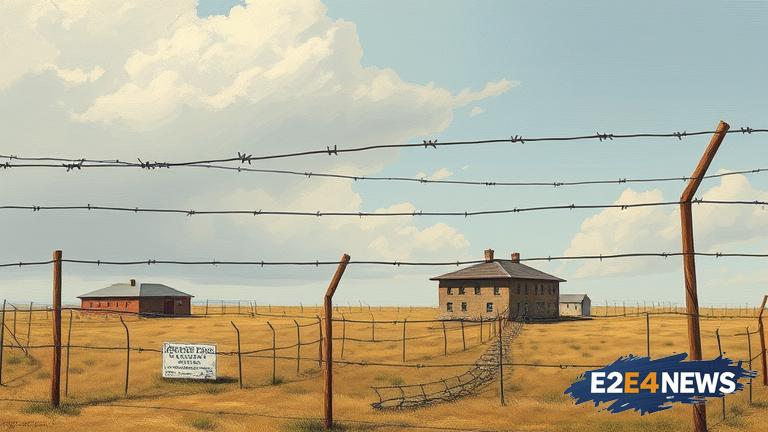The Leupp Boarding School, located in Arizona, is a poignant reminder of the dark history of Native American boarding schools. For decades, these institutions were used to forcibly assimilate Native American children into European-American culture, suppressing their indigenous identities and languages. The school’s legacy is a complex and painful one, with many former students still grappling with the trauma they experienced. Despite the passage of time, the memories of life at Leupp Boarding School remain vivid, with many alumni recalling the harsh conditions, strict rules, and emotional abuse they suffered. The barbed wire that once surrounded the school has become a powerful symbol of the confinement and oppression that students endured. Today, the site of the former school is a testament to the resilience and strength of the Native American community, with many working to preserve the history and cultural heritage of the area. The barbed wire blooms, a phenomenon where flowers and plants grow through the wire, have become a metaphor for the way in which beauty and life can thrive even in the most difficult and challenging circumstances. For many, the Leupp Boarding School represents a painful chapter in American history, one that is still being reckoned with today. The school’s legacy serves as a reminder of the importance of preserving cultural heritage and promoting understanding and reconciliation between different communities. As the country continues to grapple with issues of racial justice and equality, the story of Leupp Boarding School offers a powerful lesson in the importance of acknowledging and learning from the past. The experiences of former students, now shared through oral histories and written accounts, provide a unique window into the lives of those who attended the school. These stories, often marked by sadness and loss, also speak to the strength and resilience of the human spirit. Despite the many challenges they faced, many former students have gone on to become leaders and advocates in their communities, working to promote social justice and preserve Native American culture. The Leupp Boarding School may be closed, but its impact continues to be felt, with many still working to come to terms with the trauma and pain of their experiences. As the years pass, it is essential that the history of the school is not forgotten, but rather used as a catalyst for healing and reconciliation. The barbed wire blooms, a potent symbol of hope and resilience, serve as a reminder that even in the darkest of times, there is always the possibility for growth and transformation. In recent years, there has been a growing recognition of the need to acknowledge and address the historical trauma experienced by Native American communities, with many calling for greater accountability and reparations. The story of Leupp Boarding School is just one part of a larger narrative, one that highlights the complex and often fraught relationship between the US government and Native American communities. As the country moves forward, it is essential that the voices and experiences of Native American communities are centered, and that their histories and cultures are preserved and respected. The Leupp Boarding School may be a relic of the past, but its legacy continues to shape the present, serving as a powerful reminder of the importance of justice, equality, and reconciliation. The memories of those who attended the school will live on, a testament to the enduring power of the human spirit. In the end, the story of Leupp Boarding School is one of hope and resilience, a reminder that even in the darkest of times, there is always the possibility for growth, transformation, and healing.
